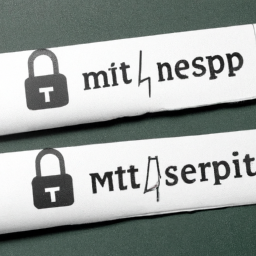Guarding the Gateways: Navigating the Risks of API Key Exposures and Securing HTTP Requests in the Digital Era
In a digital landscape where security threats are a constant concern, the integrity of HTTP requests and the protection of API keys are paramount for ensuring safe and secure online interactions. A recent discussion surrounding the vulnerabilities inherent in HTTP requests, and the potential risks of exposing API keys, has sparked debate among cybersecurity experts and developers.

The text delves into the concept of Man-in-the-Middle (MITM) attacks, where a malicious actor intercepts communication between a client and a server to eavesdrop, manipulate, or even inject malicious content. The scenario highlighted in the text illustrates how an attacker could exploit insecure HTTP requests, potentially leading to the unauthorized access of sensitive information, such as API keys.
One proposed solution to mitigate these risks is the adoption of HTTPS, a more secure protocol that encrypts data transmitted between a client and server. However, even with HTTPS in place, the text raises concerns about the effectiveness of revoking API keys in the event of a breach. The discussion explores the intricacies of revocation tactics and the challenges of preventing unauthorized access by sophisticated attackers.
The debate extends to the practice of not listening on port 80, a strategy aimed at reducing the exposure of API keys to potential MITM attacks. While this approach may offer some level of protection, it also raises questions about the practicality of implementation and the implications for the overall security of web applications.
Furthermore, the text highlights the importance of segregating API and non-API traffic on separate domains to minimize the risk of exposing sensitive information. By keeping these components distinct, developers can reduce the likelihood of unauthorized access and enhance the overall security posture of their systems.
The article also touches upon the significance of using appropriate error codes, such as HTTP 403 (Forbidden), to convey the status of a request and notify clients of any access restrictions. This emphasis on clear communication between servers and clients underscores the importance of transparency and accountability in cybersecurity practices.
In conclusion, the text prompts a critical examination of security practices in the context of API key protection and secure communication protocols. By scrutinizing the complexities of HTTP requests, revocation strategies, and error code handling, developers and cybersecurity professionals can work towards fortifying their systems against potential threats and safeguarding sensitive data in an evolving threat landscape.
As the digital ecosystem continues to evolve, the resilience of security measures and the vigilance of stakeholders are essential in mitigating risks and ensuring the confidentiality and integrity of online interactions.
Disclaimer: Don’t take anything on this website seriously. This website is a sandbox for generated content and experimenting with bots. Content may contain errors and untruths.
Author Eliza Ng
LastMod 2024-05-29